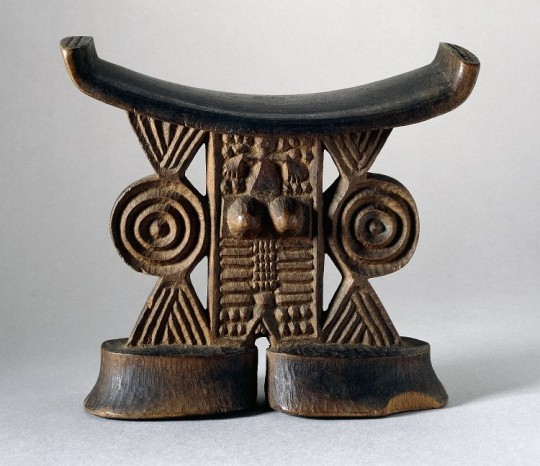#1633CE
Explore tagged Tumblr posts
Photo

Kiyomizu-dera
Kiyomizu-dera, otherwise known as the 'Temple of the Pure Water Spring', is a Buddhist temple in Kyoto, Japan. The site is famous for its impressive viewing platform, three-storey Koyasu pagoda and the medicinal pure waters of the Otowa Spring. Kiyomizu-dera is Kyoto's most popular tourist attraction, the Main Hall is an official National Treasure of Japan and the complex is listed by UNESCO as a World Heritage Site.
Foundation & Key Features
The Kiyomizu-dera temple is located on Mt. Otowa, part of the eastern hills on the outskirts of Kyoto. The temple belongs to the Buddhist Kita-Hosso sect and was founded in 778 CE by Enchin Shonin some 16 years before Heiankyo (the former name of Kyoto) was itself established as the new capital of Japan. Enchin Shonin was a priest from Nara, the capital of Japan from 710 to 784 CE, who claimed to have received a vision which directed him to the exact location of a spring, the Otowa spring which gives its name to the site. Even today, many visitors consider the waters of the spring to have magical properties and the three branches of it are each given a romantic association: health, longevity, and exam success. No wonder, then, that Kiyomizu is popular with both young and old, but if the reader visits in person and wishes to take the waters, remember that one should drink from one stream only, so choose wisely.
In 798 CE, the military leader of Japan, Sakanoue Tamuramaro, embellished the site with a large hall which was reassembled from its former position in the palace of Emperor Kammu (r. 781-806 CE). Kammu had decided to leave his old capital of Nara because of the overly strong influence the Buddhist monasteries had on the government there, and it was for this reason that the emperor permitted the building of new temples at Heiankyo only on the city's periphery. In any case, the southern monasteries continued to be influential and there was a particular and long-standing rivalry between the Kofukuji temple of Nara and the Kiyomizu-dera, the latter being, at least officially, a subsidiary of the former.
The temple complex is set in woodlands and entered via the monumental red and white Niomon Gate which, flanked by two massive statues of Buddhist guardian kings, was built in the 15th century CE. Next to it is the Sanjunoto pagoda. There is an additional gate at the west side of the estate, the Saimon Gate, which dates to the Momoyama Period (1568-1600 CE) and which is an official National Treasure of Japan. Within the wooded complex are the Hondo or Main Hall; a secondary hall similar in design to the Hondo, the Okunoin Hall; the Jishu Shrine and the Jeju-in garden which recreates famous landscape features mentioned in classic literature. Another hall, the Zuiguido Hall, is kept completely dark inside and is meant to represent the womb of Buddha's mother so that walking through it is a metaphor for one's spiritual rebirth.
One of the highlights of Kiyomizu-dera is the Koyasu, an impressive three-storey pagoda complete with spire, which was designed to house sacred texts and relics. Built between 1607 and 1633 CE, it is an excellent example of Momoyama architecture. The structure is another National Treasure of Japan and is particularly associated with granting trouble-free childbirth for those who visit it. Finally, Kiyomizu-dera is also the home of a famous statue of the bodhisattva of compassion Kannon (aka Kwannon or Guanyin in Chinese). The remarkable figure has ten heads, 1,000 arms, and is credited to Kiyomizu-dera's founder Enchin. Being classified as a 'hidden Buddha' or hibutsu, the figure is only displayed to the public every 33 years.
Continue reading...
48 notes
·
View notes
Photo

Mutapa
Mutapa (aka Matapa, Mwenemutapa, and Monomotapa) was a southern African kingdom located in the north of modern Zimbabwe along the Zambezi River which flourished between the mid-15th and mid-17th century CE. Although sometimes described as an empire, there is little evidence that the Shona people of Mutapa ever established such control over the region. Prospering thanks to its local resources of gold and ivory, the kingdom traded with Muslim merchants on the coast of East Africa and then the Portuguese during the 16th century CE. The kingdom went into decline when it was weakened by civil wars, and the Portuguese conquered its territory around 1633 CE.
Great Zimbabwe Decline
By the 15th century CE, the kingdom of Great Zimbabwe (est. c. 1100 CE) was in decline and any links with the lucrative coastal trade of the Swahili coast had ceased. This may be because gold deposits had run out in the territory controlled by the kingdom. Additional factors may have included overpopulation, overworking of the land, and deforestation, leading to food shortages which were perhaps brought to crisis point by a series of droughts.
By the second half of the 15th century CE, the Bantu-speaking Shona peoples had migrated a few hundred kilometres northwards from Great Zimbabwe to a land where they displaced the indigenous pygmies and smaller tribes who fled to the forests and desert. The exact relationship between Great Zimbabwe and Mutapa is not known other than that archaeology has shown both kingdoms had very similar pottery, weapons, tools, and luxury manufactured goods like jewellery.
The Shona thus formed a new state, the kingdom of Mutapa, from around 1450 CE, although it may well have been a case of the Zimbabwe ruling elite changing capital rather than a general population movement from the south. The founder and first Mutapa king was Nyatsimba Mutota. According to Shona oral tradition, Mutota had been sent to investigate the land around the north bend of the Zambezi River and he came back with the glad tidings that it was plentiful in salt and wild game. The second king, Mutota's son Nyanhehwe Matope, would expand the kingdom even further, capturing both land and cattle.
Continue reading...
46 notes
·
View notes